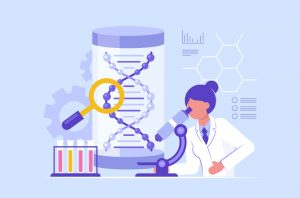Acknowledgments:
I would like to thank Dr. Lori Boies for her guidance and encouragement in researching the different aspects bioinformatics has in public health and its positive effects in improving and advancing the world of medicine. I also would like to thank my friends and family for their support during this research process. I am thankful for this opportunity to present this research and its unique approach towards medicine and the community.



10 comments
mpadilla22
Hi, Van!
Your infographic caught my eye because I had never seen the word rhabdomyosarcoma, let alone what it meant. I now know that it is a type of cancer that develops in the soft tissue affects the muscles and mainly occurs in adolescents. What made me sad is that approximately 250 children in the United States are diagnosed yearly. The good news is that there is a high cure rate when it is discovered and treated early, along with more research and support there are improvements in treatment results that allow children to live more fulfilling lives. Thank you!
Iris Ramirez
Before this infographic, I had never heard of Rhabdomyosarcoma. After reading, I was able to understand how it occurs, who it affects, where it develops, and how many cases occur. I had no idea of the involvement of bioinformatics in cancer research. Your infographic is very appealing and easy to read. I’m now interested in learning more about Rhabdomyosarcoma and the involvement of bioinformatics.
evillarreal23
Hi Van! The flow of the infographic was fun and easy to follow along. The images and symbols used throughout the infographic added a lot of personality. The transition to bioinformatics was seamless. Since bioinformatics allows for “personalized” treatments, I hope these treatments can be made affordable for all classes. One minor critique is that once I reached the end of the infographic the font size was a little hard to read. Learning about SOX18 was very interesting and I hope to see new proteins being discovered that may play a significant role! Great job!
Silvia Benavides
This infographic was really good and easy to follow. You did a great job overall!
aortega28
This was such an amazing and interesting infographic. I like that you bolded certain words throughout the infographic to highlight the key information that you are providing. I never fully understood how bioinformatics was needed when it came to cancer but your section provided me some new information. I like how you keep the infographic simple as it allowed me to fully grasp the information that you provided.
sphipps1
The overall aesthetic that you were able to create for the infographic was very pleasing to the eye. I am currently in Cell and Molecular Methods and the information you provided on SOX18 in the infographic reminded me of an assignment/essay I was assigned in the course in which I had to provide info on SOX18. After studying/researching I still struggled to give a clear description of the protein coding gene, but you do an excellent job of that here! Amazing job!
kmolina2
I love how well explained and thought out every aspect of this infographic is! From the eye-catching title down to the in-depth explanation of everything. I liked how you focused on an uncommon type of pediatric cancer rather than a more common type because it is just as important to shed light on. Not only did you teach us about a not-so-well-known type of childhood cancer, but also a new method to help treat it. This gives me hope that we can use bioinformatics to treat many different cancers and even diseases.
jdo1
I really like how you explained how Rhabdomyosarcoma works and how it is possibly related to overexpression of SOX18, making it easily understandable for people who do not know what this is. I think that it is a great idea to also speak about the benefits that this bioinfomatics can have on both the children who are experiencing this cancer as well as cancer studies in general as well as raising awareness to why this topic matters. Great infographic!
jdelafuente6
This is an amazing infographic! When I was in Cell and Molecular Methods, I did a project with Rhabdomyosarcoma, and I thought your background information was spot on. When conducting my research, I had no idea that bioinformatics played such a big role in cancer research, but after reading your section on bioinformatics incorporation, I can see how. I think it is a great idea to be able to use these analyses to find cancer treatments and I hope that bioinformatics can help researchers find cures at a quicker rate. Overall, this was a great poster, good job!
Andrea Paredes
I love the title it’s really catchy. When reading this infographic, I was reminded that some of the information presented was from Dr. Shackleford’s research. I remember this because one of her previous research students gave a presentation on SOX18. This infographic is aesthetically pleasing and presents the information in a clear concise manner which is fantastic. Overall, you did a great job at highlighting the clinical significance of bioinformatics in Rhabdomyosarcoma.